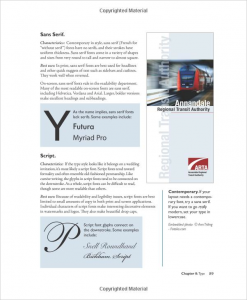Let me start by giving you a PDF of the design for my manual. What’s in there is the cover, front matter (intro with dummy text), finalized TOC, and the design for the chapter pages. I’m still not totally sure what I’m going to do with the content pages..most likely something very similar to the front matter pages, but with callouts and tip boxes using the same green and purple colors. So here’s the PDF for that:
I’ve drafted a little over half of the modules for the manual. The reason there isn’t more done is because after my presentation, I seriously began doubting the idea to use fruit as a “recurring theme” in the manual. It was actually one of the responses to my presentation that got me thinking about it. Every illustration that I made looked really “clip-arty” and cheesy, and I really didn’t like the way it was coming out.
As I’ve been writing over the last couple weeks, I’ve found that what I’m really going for is a beginners manual. (Not so basic that I need to go over how to use a mouse or how to open the program.) Like I said in my presentation, there are some seriously intricate drawings that can be made in Illustrator, and given my not-so-great artistic ability, I’m not sure how advanced I should go into the software.
I feel like I could be comfortable making a line drawing of something like a bookcase. However, since I would like the modules to be stand alone, it’s hard to incorporate a specific type of drawing into them, since I would be trying to build off previous modules to produce a better image. I think I could use the illustration of a bookcase in chapter 2 (lines and shapes), but find a way to make each module stand alone.
I guess what I’m saying is that I’m having a sort of “mid-capstone crisis” of sorts. I’m not really freaking out or anything, but I’ve come to a crossroads where I think my project is going in a slightly different direction than I had originally planned. Instead of being a task-oriented manual, I’ve decided to go with a stand-alone module type of manual.
From here, I’m going to finish the content, and start transferring everything into InDesign from Word once I finalize the design for the content pages. My biggest problem in the past week has been that my free trial of InDesign expired on Saturday, so I have to go back and forth to the library to work on the project. (Slightly annoying, but actually better because I get more work done at the library!) I’m much more comfortable with both Illustrator and InDesign at this point, so I’m confident that I can finish up the rest of this project without any more hitches. 🙂

